5.8 Undersea Restaurant: Part of the luxury Maldives resort Hurawalhi, 5.8 Undersea Restaurant is the world's largest all-glass underwater restaurant.
courtesy Hurawalhi
To access the restaurant, diners walk across a pier towards the resort's over-water Aquarium Restaurant and head down a separate path to a long, winding staircase.
Each of 5.8's 10 tables offers views of the outside action.
The coral landscape, which stretches around the edges of the tubular structure, draws all shapes and sizes of sea life right up to the glass, leaving you with the inescapable feeling that you're the one on display and the sea life are actually looking in at you.
Does the food match the scenery?
It's tempting to feel sorry for the chef tasked with creating a menu that competes with these views.
But during a recent visit by CNN Travel, German chef Bjoern van den Oever's dishes had us not just excited for what was swimming by the glass, but what would next appear on our plates during the seven-course dinner.
"it's a lot of pressure," admits van den Oever, who works with a team of six chefs.
"You have to keep up with the surroundings, you don't want people getting bored by the food. So we have to always keep the food exciting as well
As a result, he says lot of people have underestimated the restaurant and come in with low expectations -- only to be blown away.
"We wanted to create something special," he says.
"More like where people can sit and have a whole theater of things going on. Not only the fish outside, but also on the plate. So everything was very inspired by the surroundings: the coral life, the fish. And there's a lot of small details where you can look on the coral and you get the reflection on your plate."
Courses include a mix of unique meat and seafood-based dishes that emphasize the flavors of the local and imported ingredients. For example, there's the "Diver Scallops," served with apricot and almond vinaigrette.
"We take one product and we try to make the best out of it," says the chef
German chef Bjoern van den Oever oversees the menu at 5.8 Undersea Restaurant.
courtesy Hurawalhi
"So you have scallop in two ways: You have the seared scallop and then the scallop tartare. Which shows, basically, both the raw and the cooked scallop so we have a better experience eating the dish."
All courses -- sent down via a tiny elevator near the kitchen above -- are paired with a selection of top wines, selected by the resort's sommelier.
In addition to the seven-course dinner menu there's a four- or seven-course lunch. Diners from other resorts are welcome to visit -- provided they don't have kids in tow. Hurawalhi is an adults-only resort.
According to van den Oever, some diners even fly in just for lunch.
"I became a chef because I wanted to make people happy," he says. "And with a restaurant like this, it's very easy."
If you build it, the fish will come
The natural reef landscape framing 5.8 was created by Hurawalhi dive instructor Paige Bennett.
"Basically what I did is [find] dislodged coral blocks, which were not healthy," she says. "Then, I transported them to the restaurant in hopes that it would start to regain these coral animals that live inside."
In the beginning, it was an experiment, so she started out with small pieces. Then, after a couple of weeks, the corals regrew.
Aerial view of 5.8 Undersea Restaurant.
courtesy Hurawalhi
Knowing that certain fish live in symbiosis with certain corals, she chose the pieces that would attract specific fish, which would then attract other marine life.
"Once I saw that it was going to work then we started to take bigger blocks and create a natural reef landscape, something that would attract fish in a way that is representative of the Maldives.
"It's an actual living, thriving reef system and ecosystem, which will grow on its own."
Though the sheer breadth of sea life drawn to 5.8's corals is to be expected given the diversity of the Maldives' marine ecosystems, Bennett admits they were surprised by just how many species decided to move in.
"That's what makes it so rewarding now," she says.
But long before any coral was built came the most difficult task of all -- actually building the restaurant.
Manufactured in New Zealand, the restaurant's glass is 15 centimeters thick and was shipped in one entire piece then lowered down with a special crane -- a process that took two years in total. (Footage of the lowering can be viewed in in the above video.)
Hurawalhi Island Resort
Though the chef says there are diners who visit 5.8 from other resorts, most are in-house guests of Hurawalhi.
Located in the Maldives' Lhaviyani Atoll, this five-star luxury resort was designed by Japanese architect Yuji Yamazaki, of YYA New York, and is owned by Crown & Champa Resorts.
Just a 40-minute seaplane flight from Male International Airport, it's made up of 90 spacious, contemporary villas. Sixty are over-the-water villas and 30 are on the beach. Some come with infinity pools.
The resort offers a variety of dining and drinking packages, from half-board to all-inclusive. In addition to the 5.8 Undersea Restaurant, there's the over-water Aquarium Restaurant and the beach-side buffet-style Canneli Restaurant. (The spread is vast yet of a high quality -- exactly what you want in a buffet.
Hurawalhi offers a mix of over-water and beach villas.
courtesy Hurawalhi
Bars include the Coco Bar, located on the beach and open 24 hours. Aquarium Bar is over-water and offers indoor and outdoor seating. The small Champagne Pavilion, also over-water, sits at the end of the Ocean Villa jetty. It's the ultimate place for a sundowner. Bonus: Pods of dolphins regularly pass by.
In terms of activities, the resort offers a wide range of sports and excursions both on and off land, many of them free.
The dive center caters to beginner and experienced divers and can plan dives on either the resort's house reef or to some of the Lhaviyani Atoll's 50-some dive sites.
But, this being the Maldives, even the snorkeling is incredible.
Due to Hurawalhi's unique position in the atoll, the area attracts a huge array of marine life, such as manta rays, reef sharks and -- as we experienced first-hand with Bennett -- a group of massive sea turtles that regularly gathers to feed on sea grass.
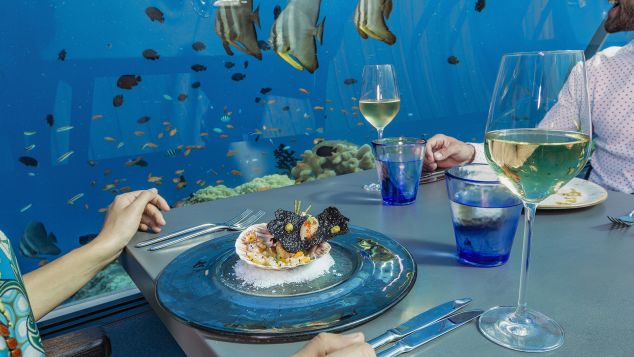
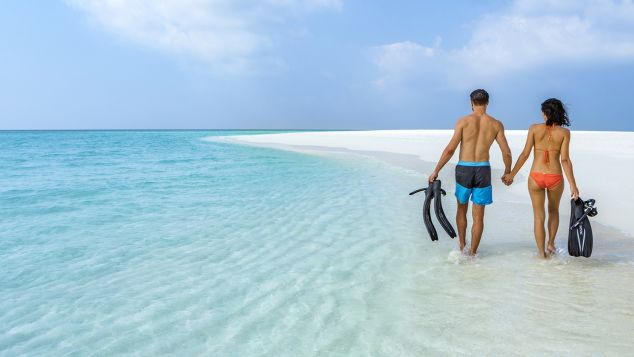
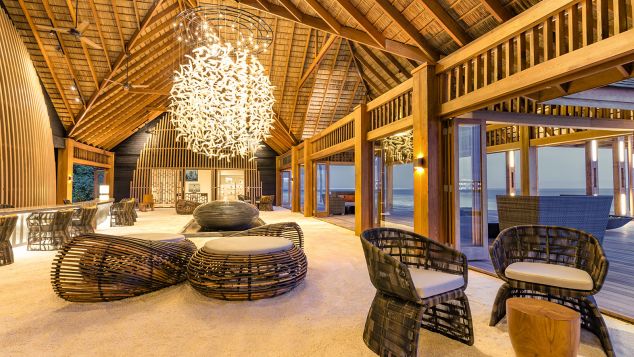
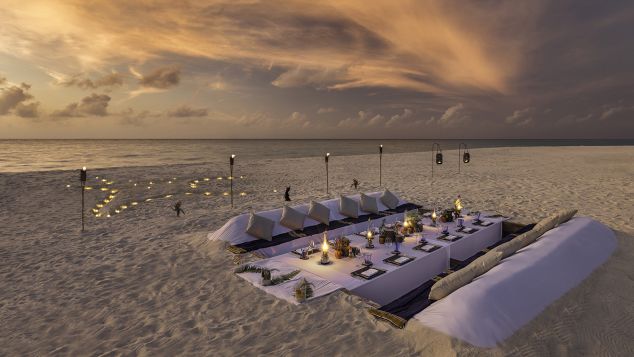
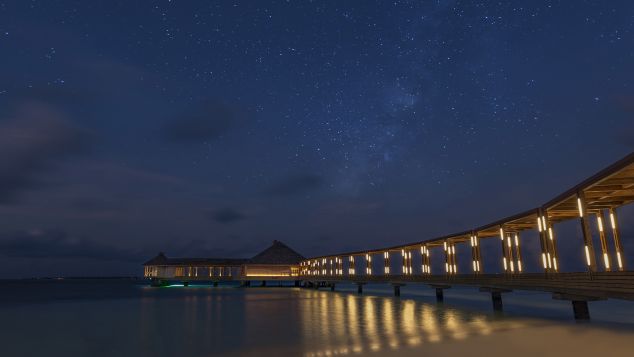
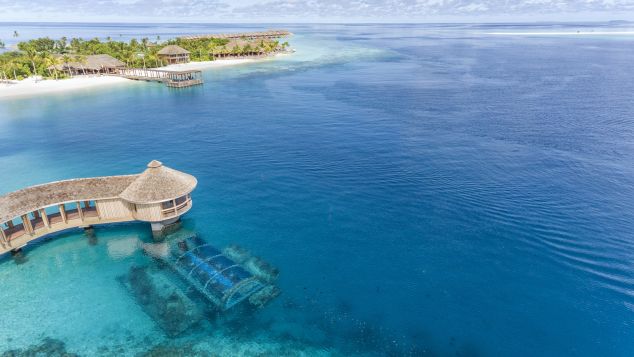
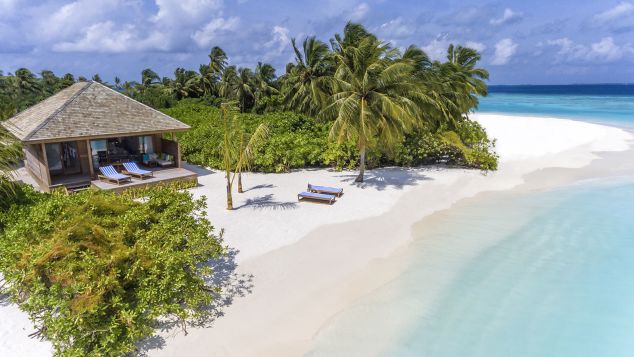
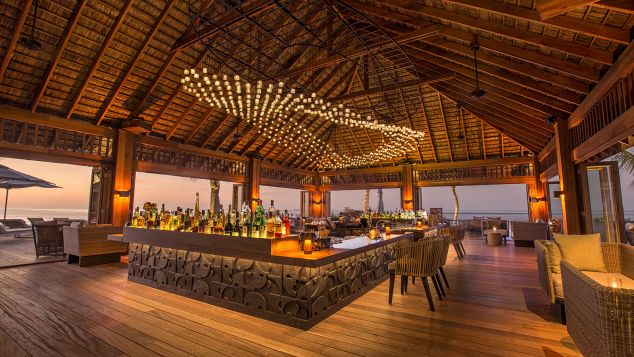
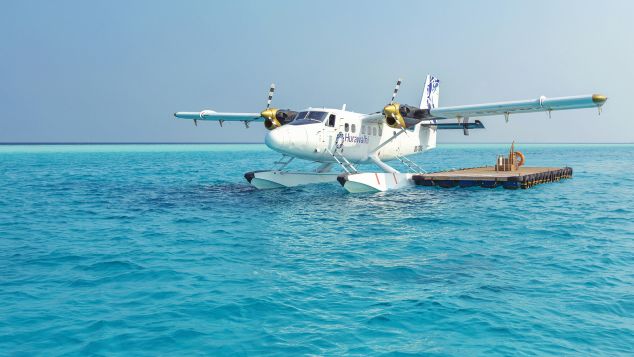
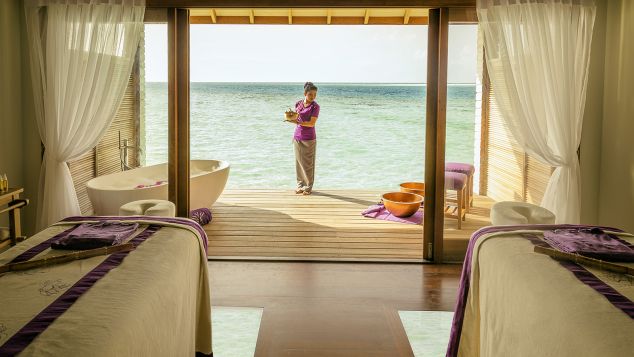
Comments
Post a Comment